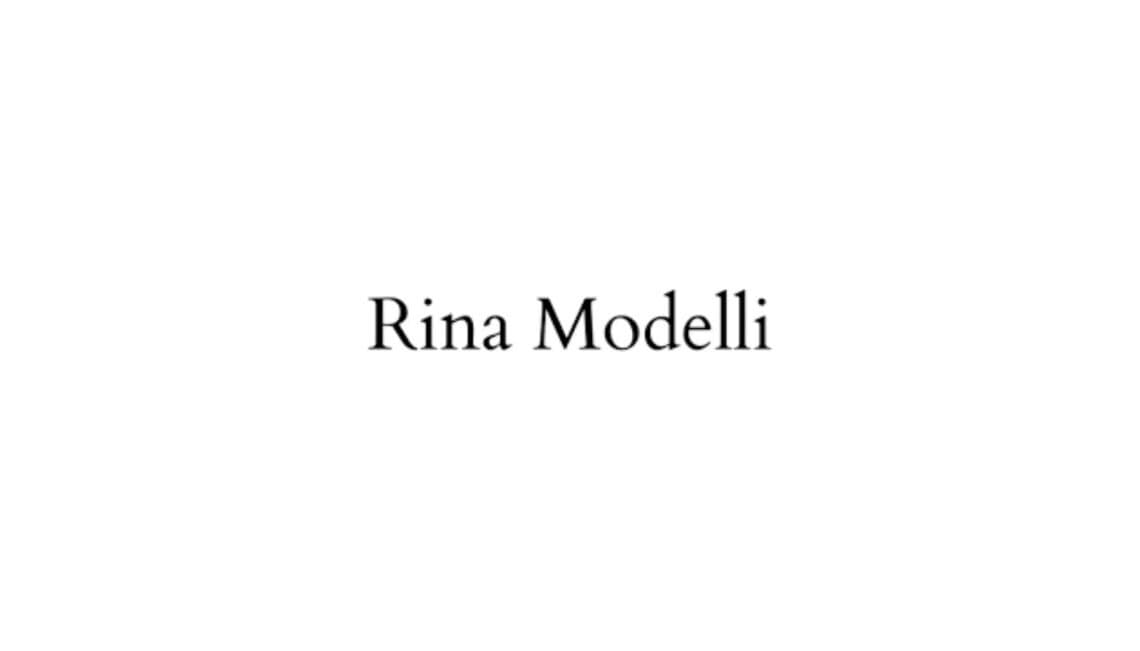
Rina Modelli
Rina Modelli: Commercial signature of Patternmaker and Seamstress Enrichetta Pedrini (1889-1973)
Twice a year, on the days of the collections, Rina Modelli would go to Paris, buy original models and croquis and, a month later, transform her Milanese workshop into an atelier, clear out the work tables, add chairs along the walls of three large rooms, open the doors communicating with the long corridor, and show models wearing garments purchased from the greats of French haute couture: Lelong, Vionnet, Balenciaga, Schiaparelli, Dior, Balmain, Nina Ricci, Fath, Givenchy.
Assault of Italian seamstresses and tailors
For a week, this catwalk was stormed by Italian seamstresses and tailors who, in turn, bought models, cloth and the right to reproduce them. The company’s account books contain names such as Zecca, Stop Senes, Velia Biagiotti, Carosa from Rome, Fercioni, Tizzoni, Montanari for Ventura, Gigliola Curiel and others from Milan, Bonanno and Maglio from Naples, Solaro, Longo and Camollo from Turin, even the nuns of the Piccole Operaie di Trani.
Enrichetta Pedrini
Enrichetta Pedrini was born in San Martino di Ferrara and started out as a seamstress, a profession which, during the years of autarchy and the Second World War, she developed with her own line before returning almost entirely to the profession of modeller, with those two trips a year to Paris and the subsequent presentations to Italian houses. Rina Modelli had three Milanese locations: in Via Piatti, in Via Rovello and finally in Via Montenapoleone at number 29.
The book by Maria Pezzi
In her autobiographical book Una vita dentro la moda (A Life in Fashion), Maria Pezzi recounts: “The Romagna-born Pedrini, the marvellous sciura Rina looked like Colette, plump, with a very fresh complexion, lively, bistered eyes, a low-cut dressing gown and a chiffon strangle around her neck. At the Paris fashion shows, the Italian tailors and her fellow models spied on her, watched her, because she had infallible taste.
When she was interested in a dress, she would pretend to doze off, to sleep, in order to divert their attention. In all the ateliers, a vendeuse looked after her exclusively’. Beppe Modenese recounts: ‘She would choose and the next morning, escorted by her daughter Dogle, she would return to re-select. The mannequin of “cabine”, the “fissa”, paraded in the clothes that had been booked. One day Enrichetta looked more intently at a model. She did not understand. Then she said: “Oh, Dogle, that’s my coat”. The model, in her haste, had put on the coat that Enrichetta had left in the “cabine”. She bought 250 models a season.
She had married by proxy Amedeo Pedrini, who had emigrated to the United States and then worked for Breda and was the leader of the Communist Party. From their stormy union, two children were born: Maria, known as Dogle, and Danilo. The eldest daughter, together with her husband Attilio Faré, continued her mother’s work, opening the first Saint Laurent Rive Gauche boutique in Italy in 1967.
Today, a family tradition
Today, the family tradition is carried on by the grandchildren, owners of the Kalathea company, distributor of French luxury ready-to-wear and haute couture collections by Laroche, Ungaro and Saint-Laurent.
You may also like:
Rina Modelli (Italian Version)


